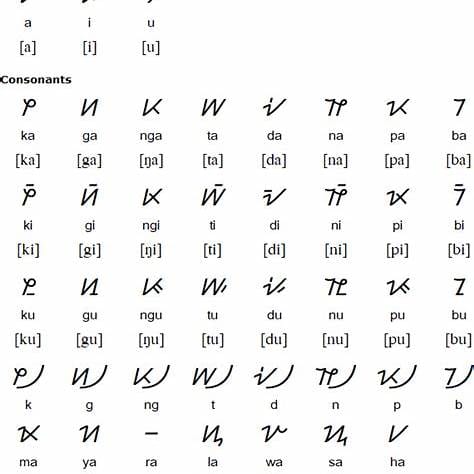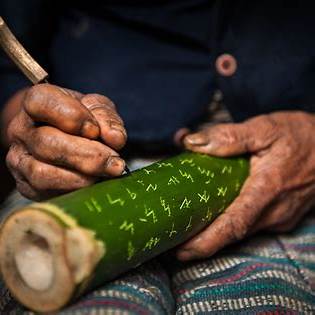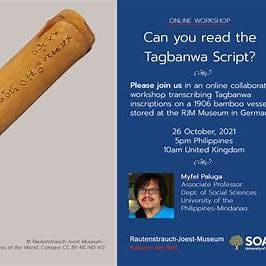


Introduction
Communication through symbols and creative graphics stands as one of humanity’s most remarkable achievements. In the Philippines, syllabaries such as the Hanunoo, Buid, Tagbanua, and Pala’wan represent not merely graphics but articulate sounds, reflecting a rich linguistic heritage. Dating back to at least the 10th century AD, these scripts have survived the centuries and remain in use to this day. Notably, the Hanunoo Mangyan syllabary features prominently in poetry—ambahan—and in song.
The Origins of Philippine Paleographs‘
The development of these syllabaries is a testament to the ingenuity of early Filipinos. Each script was meticulously crafted to represent the unique sounds of their respective languages, facilitating effective communication and cultural expression. The Hanunoo, Buid, Tagbanua, and Pala’wan scripts are among the few that have withstood the test of time, offering invaluable insights into the archipelago’s linguistic diversity.
The Hanunoo Syllabary and Ambahan Poetry
The Hanunoo Mangyan people of Mindoro have preserved their syllabary through the tradition of ambahan poetry. Ambahan is a traditional form of poetry characterized by seven-syllable lines, often inscribed on bamboo. This poetic form serves various purposes, including conveying messages, teaching lessons, and expressing emotions. The preservation of Ambahan has been instrumental in keeping the Hanunoo script alive.
The Buid Syllabary: A Symbol of Cultural Identity
The Buid people, also residing in Mindoro, have maintained their syllabary as a vital component of their cultural identity. The script is used in various aspects of daily life, from recording transactions to preserving oral traditions. Its continued use underscores the community’s commitment to preserving their linguistic heritage.
The Tagbanua Script: Guardians of Palawan’s Heritage
The Tagbanua people of Palawan have safeguarded their script through generations. The Tagbanua script is utilized in various cultural practices, including ritualistic inscriptions and record-keeping. Its preservation reflects the community’s deep connection to their ancestral roots and their dedication to maintaining their cultural heritage.
The Pala’wan Syllabary: A Testament to Resilience
The Pala’wan people have preserved their syllabary despite external influences and modernization. The script is employed in various cultural expressions, including poetry and storytelling. Its survival is a testament to the resilience of the Pala’wan community and their commitment to preserving their linguistic traditions.
Preservation Efforts and UNESCO Recognition
In recognition of their cultural significance, these scripts were inscribed in the UNESCO Memory of the World Register in 1999 under the collective title “Philippine Paleographs (Hanunoo, Buid, Tagbanua, and Pala’wan).” This acknowledgment highlights the importance of preserving these scripts as part of the world’s documentary heritage.
Contemporary Relevance and Challenges
Today, these scripts face challenges due to diminishing use and the influence of dominant languages. However, various initiatives aim to revitalize and promote these scripts, including educational programs and cultural exhibitions. The continued appreciation and study of these syllabaries are crucial for preserving the rich linguistic diversity of the Philippines.

Conclusion
The Hanunoo, Buid, Tagbanua, and Pala’wan syllabaries are more than mere writing systems; they are embodiments of cultural identity and historical continuity. Their preservation and continued use offer valuable insights into the Philippines’ rich linguistic heritage and underscore the importance of safeguarding intangible cultural assets for future generations.
Frequently Asked Questions
What are Philippine Paleographs?
Philippine paleographs are ancient writing systems developed in the Philippines, including the Hanunoo, Buid, Tagbanua, and Pala’wan syllabaries. These scripts represent articulate sounds and have been used for various cultural expressions.
How old are these syllabaries?
These syllabaries date back to at least the 10th century AD, showcasing a long-standing tradition of written communication in the Philippines.
What is ambahan poetry?
Ambahan is a traditional form of poetry by the Hanunoo Mangyan people, characterized by seven-syllable lines. It is often inscribed on bamboo and serves various purposes, including conveying messages and expressing emotions.
Why are these scripts significant?
These scripts are significant as they represent the linguistic diversity and cultural heritage of their respective communities. Their preservation offers insights into the history and traditions of the Philippines.
What challenges do these scripts face today?
These scripts face challenges such as diminishing use and the influence of dominant languages. However, efforts are underway to revitalize and promote these scripts through educational programs and cultural initiatives.
How can one learn more about these syllabaries?
To learn more, one can explore resources from cultural organizations, academic studies, and visit regions where these scripts are still in use to engage with local communities.
Responsible Tourism in Palawan: The Role of Tiki Tours
Responsible tourism in Palawan is essential for preserving both its natural beauty and cultural heritage. The Tagbanua Palawan people, as guardians of many iconic sites from Coron to El Nido, play a significant role in sustainable tourism efforts.
One example of eco-friendly tourism in the region is Tiki Tours, which offers multi-day expeditions between El Nido and Coron. These tours focus on low-impact travel, allowing visitors to experience remote islands like Linapacan and Culion while minimizing environmental disruption.
Why Choose Tiki Tours?
✔ Eco-conscious exploration of pristine marine environments.
✔ Support for local communities, aligning with responsible tourism principles.
✔ Sustainable snorkeling and island-hopping experiences that respect the natural ecosystem.
By choosing ethical travel options like Tiki Tours, visitors help ensure that tourism remains a force for conservation and cultural appreciation. This aligns with the Tagbanua’s ongoing efforts to protect their ancestral lands and marine biodiversity.
📍 Learn more about sustainable travel in Palawan: Best Diving Philippines
Additional Resources
- (UNESCO Memory of the World: Philippine Paleographs)

